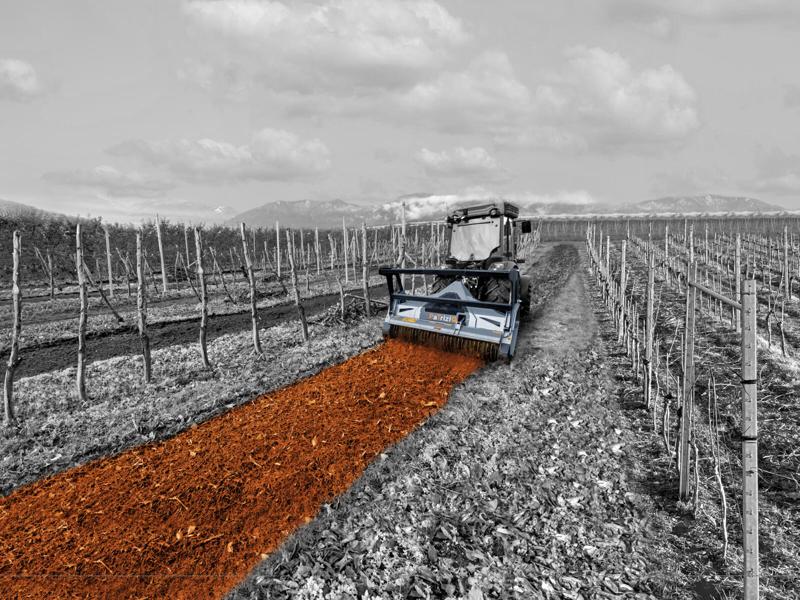Land clearing has evolved far beyond traditional mechanical vegetation removal. Today, efficiency must go hand in hand with control, especially in areas subject to environmental restrictions or operational constraints. Precision is no longer optional: it’s a performance requirement.
In this context, forestry mulchers have become strategic tools across agriculture, forestry, and infrastructure sectors. Designed to process woody material, branches, trees and stumps, they support controlled vegetation clearing while minimizing disruption to the surrounding environment. Whether the goal is site preparation, maintenance, or vegetation control, precision-focused machinery helps optimize results at every stage of fieldwork.
Engineering for control: design elements that drive precision
Precision plays a critical role in the effectiveness of a forestry mulcher, especially when operations must be carried out near infrastructures, sensitive vegetation, or uneven ground. Achieving such control depends largely on how the machine is engineered – both in terms of structural design and component configuration.
A well-balanced, high-speed rotor is essential for smooth operation and consistent shredding. The layout and type of cutting tools mounted on the rotor influence how the mulcher interacts with different materials. Fixed teeth offer high penetration and are ideal for dense vegetation and woody material, while swinging tools provide greater flexibility and resistance to impacts.
Equally important is the ability to control cutting width and depth with precision. Forestry mulchers equipped with adjustable skids, push bars, or hydraulic tilt systems enable operators to respond to changes in terrain in real time. This level of adaptability helps maintain consistent surface treatment and supports natural ground conditions, reducing the need for follow-up work.
Strategic benefits across field operations
Precision directly impacts operational outcomes across a variety of scenarios. In agriculture, forestry mulchers support site preparation by removing brush and surface roots while leaving the soil structure intact – crucial for future planting or restoration work. In utility or infrastructure projects, they enable safe and selective clearing along right-of-way paths, where nearby pipelines, power lines, or fences must remain untouched.
Forestry mulchers also excel in creating access trails, cleaning up fire-damaged areas, or removing invasive species with minimal ground disruption. Their ability to shred vegetation directly where it stands eliminates the need for removal or secondary equipment, reducing the project’s footprint.
Matching equipment to application: the role of carrier machines
Selecting the appropriate carrier is essential to ensure that a forestry mulcher delivers optimal performance. Each type offers distinct operational advantages depending on the work environment and specific application:
- Skid steers are ideal for confined or urban work zones. Their maneuverability and responsiveness allow for tight-radius operation and precise targeting around structures or in narrow corridors.
- Excavators enable vertical precision and access to difficult or uneven terrain, including embankments, drainage channels, or riverbanks. Their long reach enhances the effectiveness of forestry mulchers in slope management and selective trimming.
- Tractors provide power and coverage, making them well suited for broad, open landscapes. When equipped with PTO-driven forestry mulchers, they’re effective in clearing large fields, trails, and buffer zones with consistent output.
- Tracked carriers and special vehicles are built for demanding applications in harsh or unstable conditions. Their superior traction, ground clearance, and load distribution allow forestry mulchers to operate continuously on steep slopes, soft soils, and post-fire landscapes.
Reducing variability: why high-end engineering matters
Precision in land clearing depends not only on operator skill but also on the mechanical integrity of the equipment. Forestry mulchers built with reinforced structures, abrasion-resistant components, and sealed systems maintain their performance over time – even in harsh conditions.
Features such as replaceable wear parts, modular tool systems, and automatic torque regulation reduce variability between jobs and improve productivity. High-quality machines also offer better shock absorption, vibration control, and ease of maintenance, contributing to less downtime and more reliable results.
Ultimately, consistent engineering allows professionals to plan more accurately, execute faster, and deliver uniform outcomes regardless of site complexity.
FAE forestry mulchers: engineered for durability and operational excellence
FAE has been at the forefront of attachment engineering since 1989, specializing in the development of professional heads for tractors, excavators, skid steers, special vehicles, and tracked carriers. Operating in sectors where precision and reliability are essential – such as forestry, agriculture, infrastructure maintenance, and demining – FAE provides high-performance solutions tailored to the field.
The company’s offering includes over 400 models across more than 90 product lines, all designed to meet specific application needs in land clearing, vegetation management, and terrain preparation. FAE forestry mulchers are distinguished by their reinforced construction, advanced component integration, and use of high-strength materials capable of withstanding continuous, heavy-duty workloads.
Able to shred trees, trunks, branches, roots, stumps, and shrubs up to 16 inches in diameter, these mulchers deliver powerful and uniform shredding across complex landscapes. Their compatibility with multiple carrier types allows professionals to operate efficiently in varied conditions, from forest interiors and slope zones to fire-damaged areas and utility rights-of-way.
FAE’s decades-long expertise and dedication to product innovation result in forestry mulchers that offer superior longevity, consistent performance, and the flexibility required by today’s most demanding work environments.








